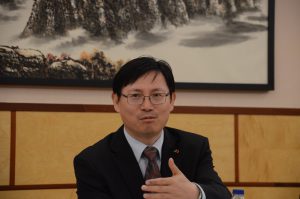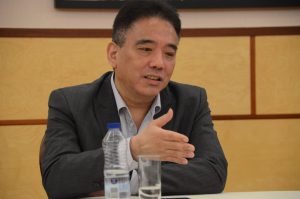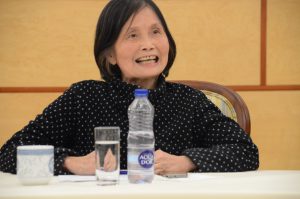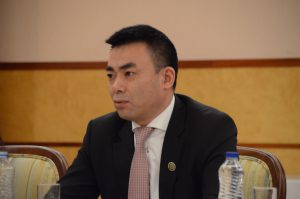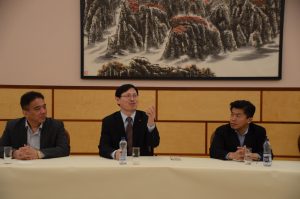亲爱的读者一般到这里就够了,如果您想练习英语或者是检察一下是否我的翻译有误,可以接着看英语原文。
以下是生日活动庆典安排和有关链接:
MONDAY APRIL 25
1. Seminar on the Baltic Sea – The Royal Dramatic Theatre, Arrival outside
Photo position (still photo, TV/web cameras, reporters)
Ladders NOT allowed
Checkpoint – Media to gather at 18.15, the Royal Dramatic Theatre’s Royal Entrance
Aftonbladet (3), Bild & Kultur (1), Expressen (3), IBL (2), KulturSthlm (1), Stella Pictures (2), SVT (3), Sveriges Radio (1), TV4 (3), TT Nyhetsbyrån (2)
ARD (4)
TUESDAY APRIL 26
Photo pool, reporters
Ladders NOT allowed
Checkpoint – Media to gather at 17.30, West Vault
Aftonbladet (1 still photographer, 1 reporter), Bild & Kultur (1 reporter), Expressen (1 still photographer, 1 reporter), IBL (1 still photographer), Stella Pictures (1 still photographer), TT Nyhetsbyrån (1 still photographer), TV4 (1 reporter)
ARD (1 reporter)
THURSDAY APRIL 28
3. Reception for authorities and organizations – The Royal Palace
Photo pool only (still photo)
Ladders NOT allowed
Checkpoint – Media to gather at 9.30, West Vault
IBL (1), Stella Pictures (1), TT Nyhetsbyrån (1)
FRIDAY APRIL 29
4. Reception for authorities and organizations – The Royal Palace
Photo pool only (still photo)
Ladders NOT allowed
Checkpoint – Media to gather at 9.30, West Vault
IBL (1), Stella Pictures (1), TT Nyhetsbyrån (1)
5. The royal artistic academies congratulate The King – The Royal Swedish Opera, Arrival of guests
Photo position (still photo, TV/web cameras, reporters)
Ladders NOT allowed
Checkpoint – Media to gather at 14.15, main entrance, the Royal Swedish Opera
Aftonbladet (3), Expressen (3), IBL (2), Stella Pictures (2), TT Nyhetsbyrån (2), TV4 (2)
Agentur Schneider Press (1), ARD (3), ddp (1), Getty Images (1), Monarchy Press (1), NRK (2), Nunn Syndication (1), Royal Press Europe (1), Royal Press Photo (1)
The royal artistic academies congratulate The King – The Golden Foyer, The Royal Swedish Opera
Photo pool, reporters
Ladders NOT allowed
Aftonbladet (1 reporter), Bild & Kultur (1), Expressen (1 reporter), IBL (1 still photographer), Stella Pictures (1 still photographer), Svensk Damtidning (1 reporter), TT Nyhetsbyrån (1 still photographer)
6. The Royal Swedish Opera and Stockholm Concert Hall will give a concert – The Nordic Museum, Arrival of guests
Media position (still photo, TV/web cameras, reporters)
Ladders allowed
Checkpoint – Media to gather at 17.45, the Nordic Museum
Aftonbladet (3), Bild & Kultur (1), Expressen (3), IBL (2), Stella Pictures (2), Svensk Damtidning (1), TT Nyhetsbyrån (2), TV4 (3)
Action Press (1), Agentur Schneider Press (1), alex&er’s Images (1), ARD (3), Billed Bladet (3), Bunte (2), ddp (1), E-press Photo (1), Getty Images (1), Hussein Royal Collection (1), Monarchy Press Europe (1), Newspix International (1), NRK (2), Nunn Syndication (1), People Picture (1), Rex Schutterstuck (1), Royal Portraits Europe (1), Royal Press Europe (1), Royal Press Photo (1), Se og Hör (2), UK Press Ltd (1)
The Royal Swedish Opera and Stockholm Concert Hall will give a concert – The Nordic Museum, Inside
Photo pool only (still photo)
Ladders NOT allowed
IBL (1), Stella Pictures (1), TT Nyhetsbyrån (1)
SATURDAY APRIL 30
7. Te Deum thankgsgiving service – South Vault, The Royal Palace, Arrival of the guests
Photo position: Stairwell in South Vault
Ladders NOT allowed
Dress code: Dark suit
Checkpoint A – Media to gather at 8.00, the entrance to Museum Tre Kronor
Upper level (TV/web, still photo)
Aftonbladet (1), Expressen (1), IBL (1), Stella Pictures (1), SVT Nyheter (1), SVT Året med Kungafamiljen (1), TT Nyhetsbyrån (1), TV4 (1),
Abaca (1), Action Press (1), Agentur Schneider Press (1), alex&er’s Images (1), Antena 3 (1), ARD (1), Associated Press (1), Billed Bladet (1), Broadview (1), Bunte (1), ddp (1), dpa (1), E-press Photo (1), Monarchy Press Europe (1), Newspix International (1), NRK (1), NTB Norge (1), Nunn Syndication (1), People Picture (1), Rex Shutterstuck (1), Royal Portraits Europe (1), Royal Press Europe (1), Royal Press Photo (1), Se og Hör (1), UK Press Ltd (1), XINHUA (1), YLE (1) ZDF (1)
Lower level (photo pool – still photographers only)
Aftonbladet (1), Expressen (1), Getty Images (1), IBL (1), Stella Pictures (1), TT Nyhetsbyrån (1)
Te Deum thanksgiving service – The Royal Chapel
Photo pool only (still photo)
Ladders NOT allowed
Dress code: Dark suit
Checkpoint A – Media to gather at 8.00, the entrance to Museum Tre Kronor
IBL (1), Stella Pictures (1), TT Nyhetsbyrån (1)
A limited number of media companies will be allocated a seat for one reporter each at Te Deum thanksgiving service, by special invitation of the Swedish Royal Court.
8. The Swedish Armed Forces’ celebration – The Outer Courtyard
Media position (still photo, TV/web cameras, reporters)
Ladders allowed
Checkpoint B – Media will be let into the media positions at 10.00 on the Outer courtyard
Aftonbladet (3), Bild & Kultur (1), Expressen (3), IBL (3), KulturSthlm (1), Stella Pictures (3), Svensk Damtiding (1), Sverigs Radio (1), SVT Nyheter (3), SVT Året med Kungafamiljen (1), TT Nyhetsbyrån (3), TV4 (3)
Abaca (1), Action Press (1), Agentur Schneider Press (1), alex&er’s Images (1), Antena 3 (3), ARD (3), Associated Press (1), Billed Bladet (3), Broadview (3), Bunte (1), ddp (1), dpa (1), E-press Photo (1), Getty Images (1), HER og NÅ (1), Hussein Royal Collection (1), Iltalehti (2), Monarchy Press Europe (1), Newspix International (1), NRK (2), NTB Norge (1), Nunn Syndication (2), People Picture (1), Photomedia (1), PPE-Agency (1), Rex Shutterstuck (1), Royal Portraits Europe (1), Royal Press Europe (1), Royal Press Photo (1), Se og Hör (2), UK Press Ltd (1), XINHUA (1), YLE (1), ZDF (2)
9. Choral tribute – Lejonbacken, The Royal Palace
Photo position (still photo, TV/web)
Ladders NOT allowed
Checkpoint C – Media to gather at 11.30, outside the South Vault, on Slottsbacken
Aftonbladet (1 still photographer), Expressen (1 still photographer), IBL (1 still photographer, 1 video), Stella Pictures (1 still photographer, 1 video), SVT Året med Kungafamiljen (1), TT Nyhetsbyrån (1 still photographer, 1 video), TV4 (1)
Media that have not been given a position in the photo pool on Lejonbacken may photograph from public areas in front of the Lejonbacken terrace.
Departure of the cortège – Mynttorget
Photo position (still photo, TV/web)
Ladders NOT allowed
Aftonbladet (1 still photographer), Expressen (1 still photographer), IBL (1 still photographer, 1 video), Stella Pictures (1 still photographer, 1 video), SVT Året med Kungafamiljen (1), TT Nyhetsbyrån (1 still photographer, 1 video), TV4 (1)
Media that have not been given a position in the photo pool may photograph from public areas.

